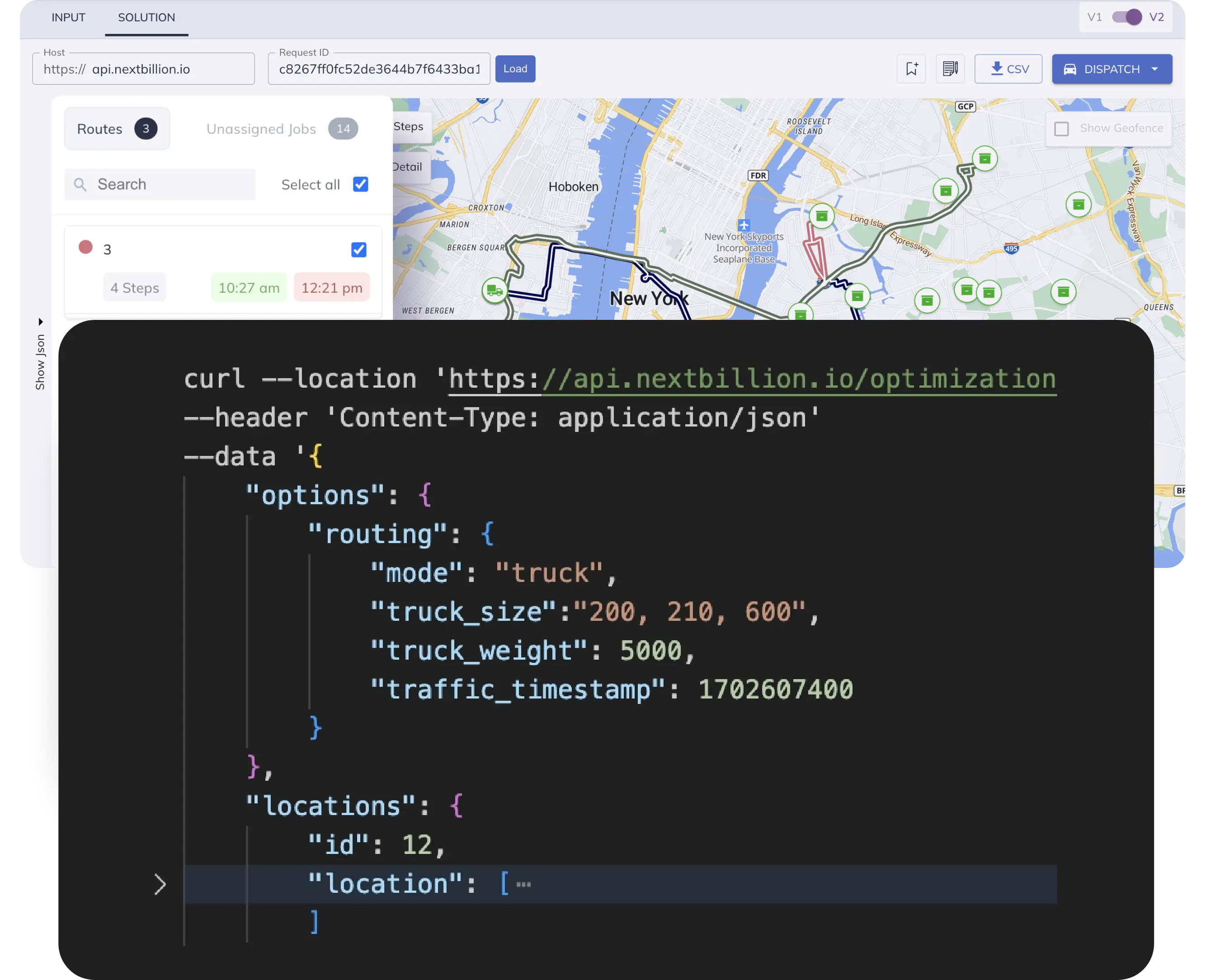If your business operates a fleet — no matter the number or types of vehicles involved — you’ll likely need no introduction to the importance of route optimization in keeping things running smoothly and efficiently.
When it comes to getting what you want out of your routing solution, routing constraints are the most powerful tool at your disposal. They let you dictate the conditions around which routes are optimized, enabling a customized solution that’s closely tailored to your business’s unique operational needs. The more constraints you can configure, the better you can tune the routing algorithm to your exact requirements.
One of the features that sets NextBillion.ai’s Route Optimization API apart from the rest is that it offers over 50 configurable routing constraints! In this article, we’ll explore how the ‘maximum waiting time’ constraint works and why it’s useful.
Understanding maximum waiting time
Maximum waiting time is a routing constraint that limits the duration a vehicle can wait at a specific location while plying its route. When executing an optimization request, the routing engine will find the optimal job assignments and sequences that adhere to the maximum waiting time (and any other constraints) you’ve set. Any jobs that cannot be started without exceeding the maximum waiting time are left unassigned in the route and can be integrated later through re-optimization.
Understanding and effectively implementing this constraint can significantly impact the overall success of your routing strategies and, thus, is critical for efficient and streamlined operations. Maximum waiting time is useful in striking a healthy balance between job completion and operational efficiency. Let’s take two example use cases to illustrate how this might play out in practice.
Example: Last-Mile Delivery
Consider the scenario of an e-commerce company and its doorstep delivery fleet. Assuming that each driver is paid by the hour, it’s clearly in the organization’s best interest to minimize any driver time that’s not spent completing deliveries.
Now, imagine that one of the drivers has ten packages to deliver one day, nine of which he can complete by 4 p.m. The route optimizer can get him to the final delivery location by 4:15 p.m., but the customer will only be available to receive the delivery at 5 p.m. Without the maximum waiting time constraint in this situation, the driver is instructed to just wait at the location for 45 minutes — a costly proposition for the company.
However, if a maximum waiting time has been defined — say, 5 minutes — the optimizer will recognize that this delivery cannot be fulfilled by that particular driver. Instead, it’ll find another driver who can complete the delivery within the required constraints.
Limiting the waiting time in this scenario helps the company minimize its operational costs. It also prevents any single delivery with a high waiting time from impacting the timeliness of subsequent deliveries further down the line, keeping customers satisfied and loyal.
Example: Employee Pick-Up Service
For our second illustration, let’s take an organization that offers its employees daily transportation services to and from the workplace. Drivers are expected to get the employees to the office on time so as not to lose any productivity.
Picture a scenario in which one employee is not at the pick-up point when their driver arrives. How long should the driver wait for the employee before deciding to move on to the next destination? If the company hasn’t put a maximum waiting time constraint in place, it’s left to the driver’s discretion. This jeopardizes the timely pick up of every other employee on that driver’s route and could ultimately end up with all of them being late for work.
On the other hand, if a maximum waiting time has been set, the situation is far more controlled. Once the time limit is exceeded, the navigation system will instruct the driver to proceed to the next stop. Such clarity and timely intervention in these circumstances absolve the driver of decision-making responsibilities and help ensure the best possible outcome for the company in a less-than-ideal situation.
By efficiently managing waiting times, the organization can optimize the use of its transportation fleet, preventing unnecessary idling and contributing to a more sustainable and cost-effective transportation system.
These use cases highlight some of the applications of the maximum waiting time constraint and how it can be used to meet specific operational needs.
As alluded to in the above examples, the maximum waiting time constraint, when utilized intelligently, can have significant impacts on vital business parameters, including customer satisfaction, operational efficiency and productivity.
To learn more about maximum waiting time, how it works and how to implement it in technical detail, read our documentation section. Want to see firsthand what NextBillion.ai’s Route Optimization API can do for your organization? Book a demo with us here.






